Russian memorial sculptor Ivan Petrovich Martos
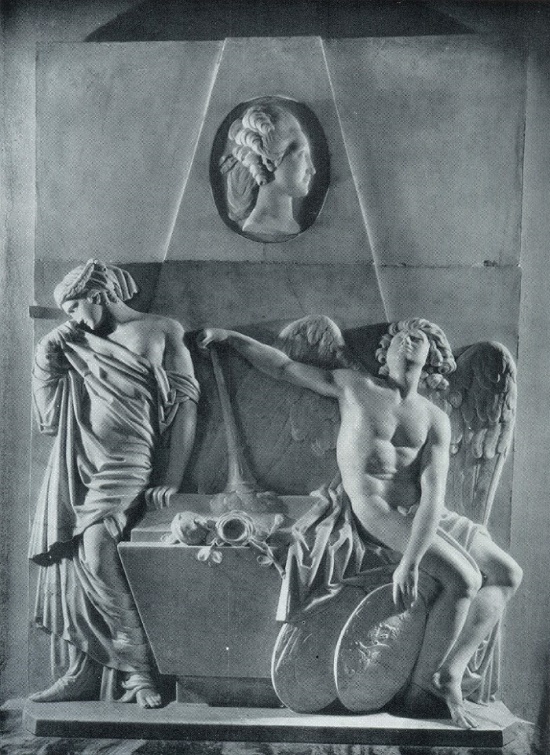
Russian memorial sculptor Ivan Petrovich Martos
The largest and most authentic singer of the elegiac theme, who dedicated all his long life and great talent to the Russian memorial art, was Ivan Petrovich Martos (1754 – 1835). This genre became the main one in his work. A convinced and consistent representative of classicism, he studied masterpieces of ancient art during his stay in Italy. However, the sculptor did not follow the path of repeating the seen samples, although he paid tribute to their perfection. He developed his own type of Russian tombstone, using the tradition of antiquity as the basis.
The memorial heritage of Martos is great – over twenty tombstones. Like no other, he was able to convey the deepest emotions. Under his chisel they are always humanly sincere. In the works of Martos, there is no sense of despair, characteristic to the most of the sculptors of the genre of cemetery sculpture. In creative searches, this remarkable artist strove to deep comprehension of complex human feelings. In addition, he fully used the plastic form, but never allowed oversaturation of its composition. Meanwhile, Martos masterfully solved the problem of volume, achieving in its construction the logical clarity and refined simplicity.

So, his creative activity on his return from Italy Martos began with a gravestone. It was a monument to SS Volkonskaya (marble, the State Tretyakov Gallery). By this sculpture the artist revealed his powerful talent of mastering the material. In particular, high skill in transferring folds of fabric, draperies, using them as a reception for an emotionally characteristic image. The allegorical “language of the folds” of Martos is extraordinarily expressive. In the Volkonskaya gravestone, he demonstrated a great skill with the help of a rock mass inspired by him to break the subtle nuances of human experience.
Meanwhile, a living human feeling, poetic intimacy – features that in sculpture determine the character of the further development of the Russian memorial genre of the 18-19 centuries – will become the national distinction of Martos’ artistic images. He brilliantly worked on the relief. Brighter than in any other work, this quality of his talent revealed in the gravestone of M.P. Sobakina, finished by the sculptor in the same 1782.
Contemporaries enthusiastically received his monuments and classified them as the highest category works of art. This evaluation has retained its power to our days. The gravestones created by Russian memorial sculptor Ivan Petrovich Martos – a masterpiece of Russian plastics.
Both early tombstones of the young Martos – Volkonskaya or Sobakina (1782) are full of tender lyrical sadness. Over time, it grows into a majestic, exalted sorrow, sounds more temperamental and deeper, although the sincerity of feeling continues to form the basis of the Martos memorial images.
One of the most perfect in the power of plastic language is the gravestone of E.S. Kurakina, executed by Martos in 1792 and intended for installation no longer in the interior, but in the open air – in the Lazarevsky necropolis. The tombstone of Kurakina belongs to Martos’ highest creative achievements in the memorial art of the 18th century. The date of execution of the monument and the names of the sons-customers – carved on the back of the high pedestal. And the symbolic image of the latter is the relief on the front side of the pedestal in the form of two weeping young men in antique clothes.
Russian memorial sculptor Ivan Petrovich Martos is distinguished by the monumentalism of artistic decisions, which in general is the stylistic basis of the classicism. In his gravestones there are no fractional, crushed forms, always volumes, even on a small scale, integral and generalized.
In the 80’s. XVIII century Martos begins working with architect Charles Cameron (1730s – 1812). Creative duo of these artists gave remarkable results both in the decoration of the palace interiors of Pavlovsk and
Tsarskoe Selo, and in the solution of memorial structures.
“Monument to parents” – typical for Russian classicism architectural construction of small forms. Being an adornment of the park by its nature, the ensemble of the old necropolis, as well as many of the tombstones of this time with their secular appearance would perfectly fit the landscape of the park.
Traditionally, Martos’s memorial images seem to hide from the viewer the suffering, either with the help of a lowered head cover (S. Volkonskaya monument) or by masking a lowly inclined face with the gesture of hands pressed to it (monuments of PA Bruce, E. S. Kurakina, and “Parents”).
However, for the first time and only once the drama of human experience Martos showed openly in the white-marble tombstone of the Lazarevs. At the center of his composition is a medallion with a profile portrait of a young Lazarev, for whom this tombstone was ordered by his father Count I. Lazarev (1735-1801), the founder of the Moscow Institute of Oriental Languages.
In addition to the listed works, Martos executed a number of gravestones for many provincial cities of Russia. Among them, in particular, a grave monument to Count M. I. Platov in Novocherkassk and Baron Corfu in the cemetery
in the city of Orel.
The role of Martos in the formation and development of Russian art can not be overestimated. He created artistic masterpieces of world significance. Martos – the founder and creator of a new national type of Russian artistic tombstones of the XVIII century. It was in this genre that he achieved an exceptional force of expressiveness and plastic beauty of the image. In addition, his influence on contemporaries and artists of the next generation was extremely great.
Russian memorial sculptor Ivan Petrovich Martos
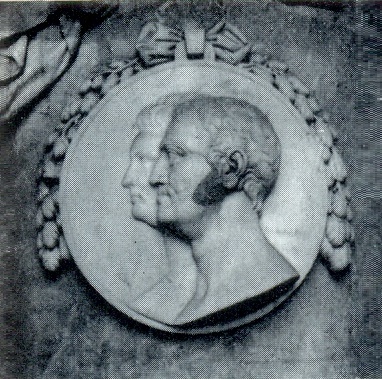







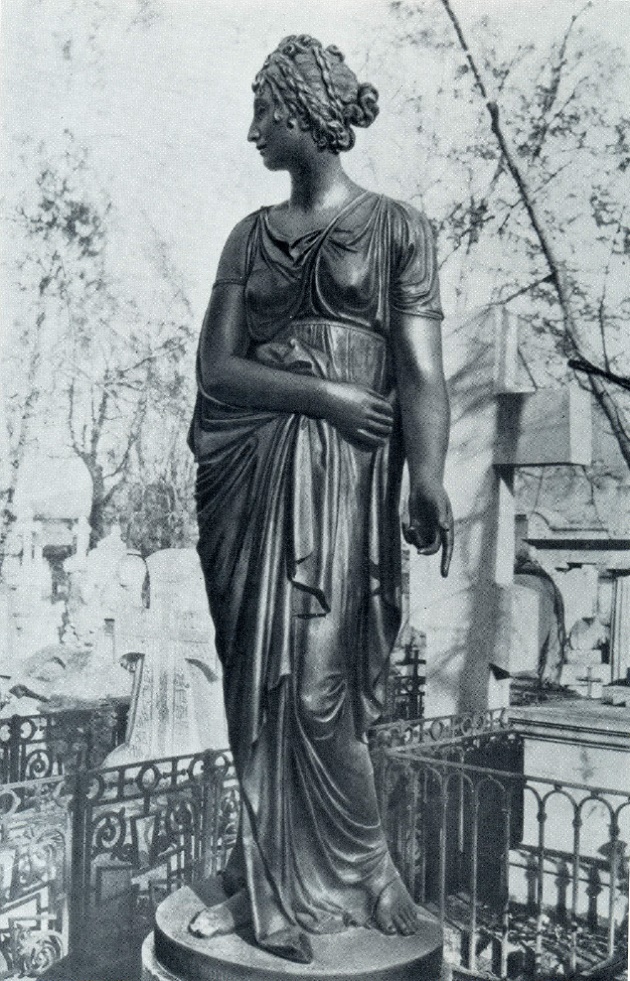
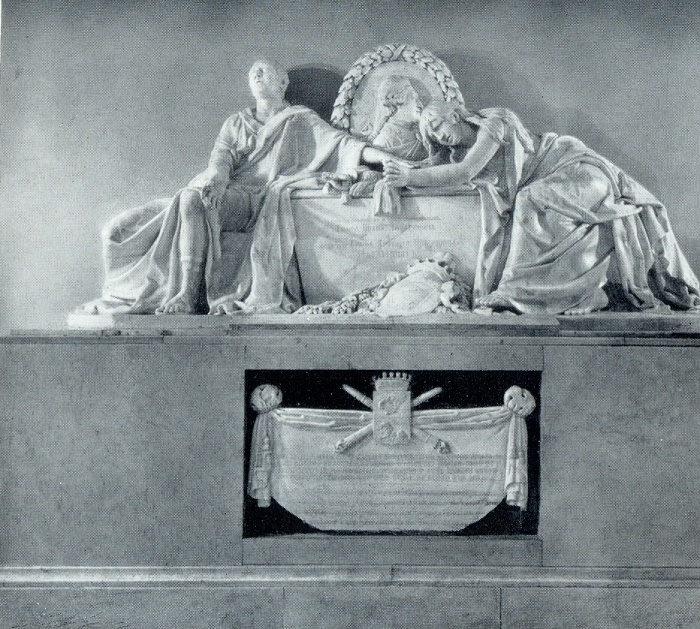












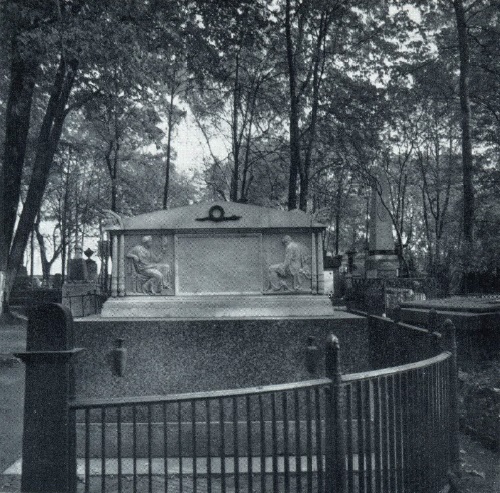

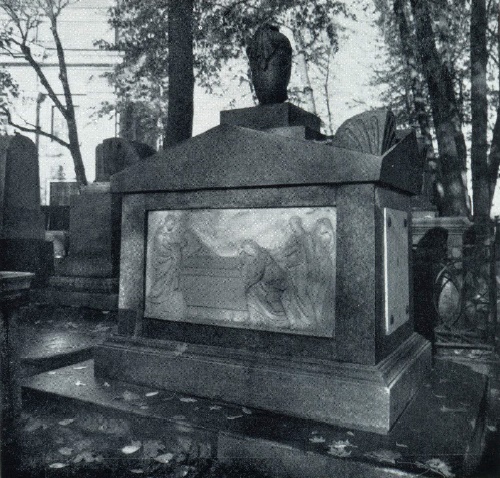









source: Russian memirial sculpture. Moscow “Art”, 1978







